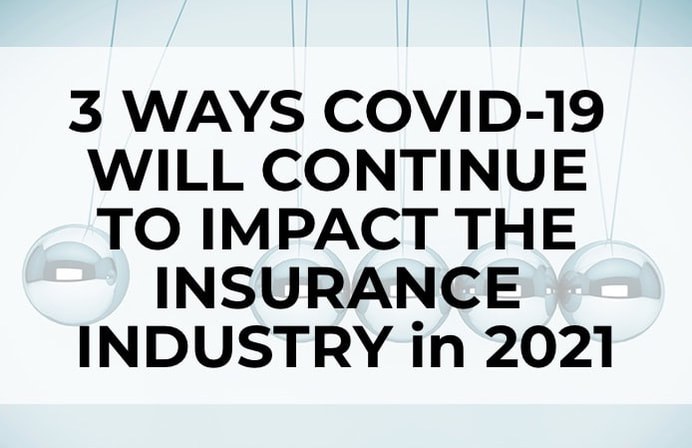The effects of the COVID-19 pandemic will be felt by the insurance industry and its customers well into 2021 as consumers and businesses continue to face economic challenges, according to a new survey by consumer credit reporting firm TransUnion.
Insurance customers will also expect insurers to offer digital tools that make it easier to conduct business.
“The unpredictable environment that lies ahead indicates consumers and businesses will increasingly rely on and choose insurers offering online resources and tools that can best meet their needs, particularly as digital adoption continues to grow,” said Mark McElroy, executive vice president and head of TransUnion’s insurance business.
TransUnion conducted the survey of 3,148 U.S. consumers with active auto, homeowners, renters and/or life insurance policies during the first week of December. In their analysis of the findings, TransUnion researchers identified several trends they believe the insurance industry can expect to see play out during 2021.
Three Trends to Watch
Trend #1:
The financial and economic challenges brought forth by COVID-19 will continue to impact consumers and businesses, potentially leading to profitability impacts for insurance carriers down the road.
Looking at the next three months ahead, TransUnion’s consumer survey indicates respondents are primarily concerned about being able to pay for their auto insurance bill (44%), followed by their car payment (26%), mortgage payment (23%) and life insurance bill (22%).
A recent TransUnion analysis also noted an increase in the distribution of higher risk auto insurance shoppers as well as those with payment accommodations in 2020. Factors such as rising unemployment and varying financial impacts may be contributing to this trend, and it will be imperative for insurers to be able to identify which customers are facing COVID-19 hardship to strengthen engagement.
Within the commercial automotive space, TransUnion has observed that many insurers are experiencing relative stability in underwriting performance in the short-term resulting from fewer claims on less congested roads and less miles driven, among other confluent factors. As the broader environment begins to normalize, insurers will again need to implement strategies that help them increase segmentation and remain competitive in the wake of COVID-19.
Trend #2:
Consumers and businesses expect insurers to have a greater understanding of their individualized needs in light of shifting behaviors and preferences.
For respondents who own or lease a car (90%), TransUnion’s survey indicated that 72% used their vehicle less in the time since COVID-19 was named a global pandemic or don’t use their vehicle anymore. Given this drop, there may be greater consumer interest in usage-based insurance and telematics programs. The survey found 61% of drivers would allow their insurance carrier to collect real-time information about their mileage and driving habits if it could lower their premium.
Looking at the commercial and personal property space, respondents expressed a strong preference for at-home settings when asked to choose their preferred work environment for 2021 – 37% of respondents cited a preference to work at-home, and 31% preferred a hybrid of working in-person and at-home, with more time spent working from home. These findings may signal less demand for commercial real estate as well as broader shifts within the commercial and personal space as employers extend work-from-home policies or adopt hybrid work environments to best address employee needs and operational demands.
Trend #3:
Insurance digitization efforts will continue to strengthen in 2021.
Digital adoption in the insurance industry grew 20% globally in the past year. This transformation is taking place across the insurance policy lifecycle, from marketing to claims submissions to digital policy servicing. TransUnion’s survey found that almost half of respondents (47%) filed an auto and/or property claim in the last year, and of those, nearly four in 10 (39%) used a mobile app, website portal or e-mail.
Consumer preferences for interacting via digital/online platforms also support this trend. The survey found respondents preferred to communicate with an insurance provider primarily via e-mail (32%) and telephone calls (32%), followed by an insurer mobile app or website portal (18%). As digitization grows, insurers must balance introducing and expanding digital customer interactions while also delivering friction-right experiences and protecting against fraud.
.png?width=180&height=65&name=Untitled%20design%20(29).png)




